


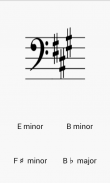

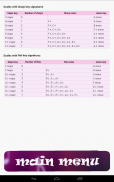
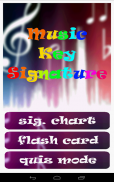
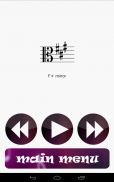
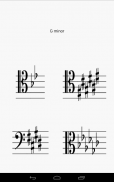
Music Key Signature

Description of Music Key Signature
In musical notation, a key signature is a set of sharp or flat symbols placed together on the staff. Key signatures are generally written immediately after the clef at the beginning of a line of musical notation, although they can appear in other parts of a score, notably after a double bar line.
A key signature designates notes that are to be played higher or lower than the corresponding natural notes and applies through to the end of the piece or up to the next key signature. A sharp symbol on a line or space in the key signature raises the notes on that line or space one semitone above the natural, and a flat lowers such notes one semitone. Further, a symbol in the key signature affects all the notes of one letter: for instance, a sharp on the top line of the treble staff applies to F's not only on that line, but also to F's in the bottom space of the staff, and to any other F's.
In principle, any piece can be written with any key signature, using accidentals to correct the pattern of whole and half steps. The purpose of the key signature is to minimize the number of such accidentals required to notate the music. The sequence of sharps or flats in key signatures is generally rigid in modern music notation. For example, if a key signature has only one sharp, it must be an F sharp.
This app helps you get familiar with them and memorize them. It provides different ways (chart, flashcards and quizzes) to help you study. At the end, you would be able to identify different music key signatures on different clefs (treble, bass, alto and tenor) as quick as possible. It's suitable for young kids or any people who're preparing for music theory exams, such as RCM's.






















